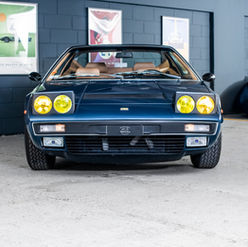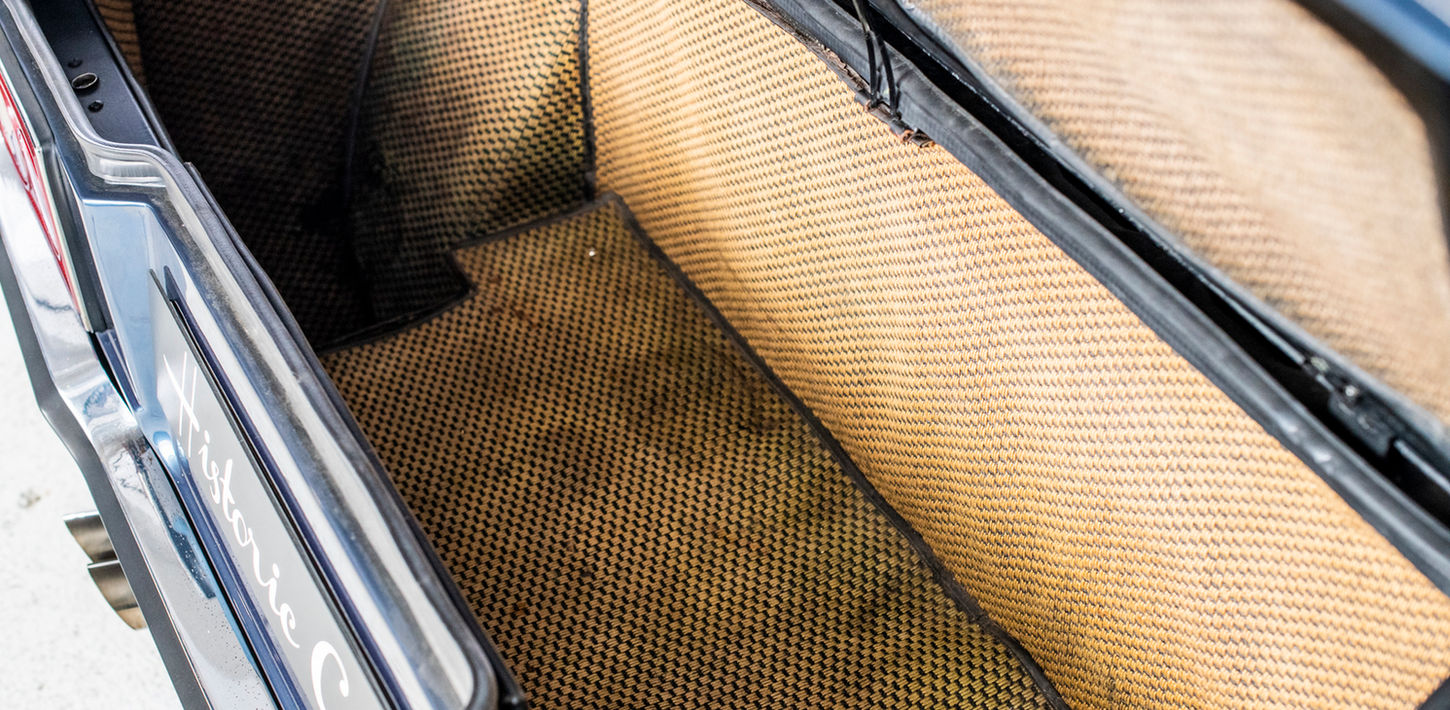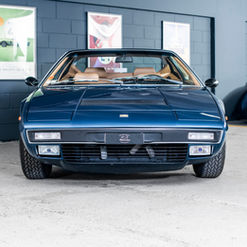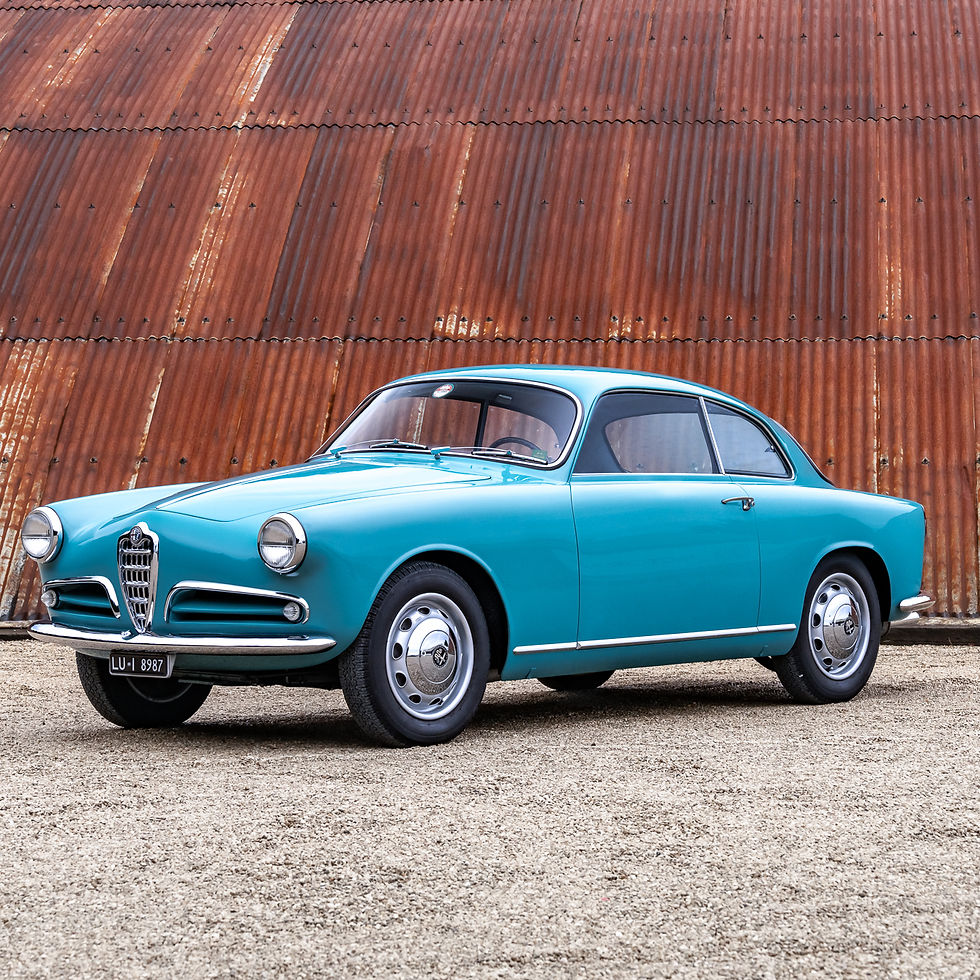Paris Motor Show, 1973. After 20 years of exclusive collaboration with Pininfarina, Ferrari unveiled the Dino 308 GT4, a model equipped with a V8 engine imagined by Bertone. In his Turin workshop, Maestro Marcello Gandini accomplished a real feat: designing an attractive 2+2 with a rear mid-engine in a body just over 4.30 meters long.
The Dino 308 GT4 was the first completely new Ferrari model since Fiat took control of the Maranello production vehicle department in 1969. The successor to the 246 GT, it was presented at the 1973 Paris Motor Show. The 308 GT4 inaugurated a three-liter V8 (a return to the displacement of the 250 GT), which would be carried over to the 308 GTB. Unlike the V6 of the Dino 246, which was produced at Fiat, the 308's engine was made in Maranello. The four overhead camshafts are driven by two toothed belts, as on the 12-cylinder boxer engine. Mounted transversely in the center of the car, this engine (with wet sump) forms a unit with the gearbox and the self-locking differential. Fed by four Weber twin-barrel carburetors, it develops 250 bhp at 7,700 rpm, with the torque remaining at the same level.
Another singularity, and not the least, is that the 308 GT4 is a 2+2. A daring concept and a risky aesthetic gamble! How do you fit four seats in a small car with a central rear engine without creating an ugly duckling? Pininfarina, Ferrari's resident designer since 1953, was hardly enthusiastic about the specifications. Nor was he tempted to take risks. So Bertone took the plunge! And we can only congratulate the coachbuilder from Turin, who acquitted himself remarkably well. Especially as the car is only ten centimeters longer than the Dino 246. Quite a feat! According to Bertone, who had designed the Fiat Dino coupé, the collaboration with Ferrari came about at Fiat's suggestion.
The car's slimline front end features a plunging bonnet and retractable headlamps, while a large rectangular air intake is positioned under the slim radiator grille. Beyond a very flat roof, a sleek stern ends in a reduced overhang. The rear window is set between long quarter-pillars to accommodate two hatches, one for the engine and the other for the luggage compartment.
To accommodate two passengers in the rear, the 308 GT4's driving position has been moved forward and its wheelbase extended to 2.55 metres. The multi-tube chassis and suspension were inherited from the 246.
When production of the 246 GT/GTS ended in 1974, the 308 GT4 was the last model in the Dino range. It was also the only model that American Ferrari dealers could offer their customers, as the 365 GT4BB and 365 GT4 2+2 models were not homologated for that market.
So the only ‘Ferrari’ they sell doesn't even carry a Ferrari badge, and to make matters worse, its performance is muzzled by emissions control equipment. This didn't help sales, so in mid-1975 the factory asked US dealers to install Ferrari badges on stock cars. Vehicles that had not yet left the factory were fitted with Ferrari badges, with the Dino only appearing on the boot. As a result, some vehicles on the American market bore both Ferrari and Dino badges.
In 1975, Ferrari launched the 208 GT4, a version reserved exclusively for the Italian market and reduced to two liters for tax reasons (reduced VAT).
Power was increased to 170 bhp and the top speed was limited to 200 km/h. Externally, the only difference between the car and the 308 was the absence of fog lamps in the radiator grille and a single tailpipe.
Although Ferrari entrusted the design of the 308 GTB - presented in 1975 and produced alongside the 308 GT4 - to Pininfarina, Bertone offered a spider based on the 308 GT4 at the 1976 Turin Motor Show. Called the Rainbow, this strict two-seater with a wheelbase ten centimeters shorter could have been the model missing from the Ferrari range since the withdrawal of the 246 GTS. The Rainbow is an interesting exercise, very much in the style of the Bertone bodywork of the time. Ultra-modern, the sharp design uses only straight lines and sharp angles (the wedge-shaped line inherited from the Carabo and Marcello Gandini's Stratos), a bias that is even reflected in the design of the wheels! What's more, this concept car features an ingenious device: a hard top positioned behind the seats transforms the car into a coupé-spider, simply by being tilted into the closed position by the driver using a simple control.
The Dino brand came to an end in 1976, when the prancing horse replaced the Dino logo on the 308 GT4, which now bore the Ferrari badge.
At the same time, the car received a number of detailed modifications to the radiator grille and passenger compartment.
In order to comply with anti-pollution and safety standards, the American version of the 308 GT4 was disfigured by unsightly retractable bumpers, while power was cut by around 10%. This loss, combined with a significant weight gain, put a damper on performance... and sales!
In Europe, the commercial fortunes of the 308 GT4 also followed a downward curve, and production of the car was discontinued in 1980.Built between 1974 and 1980, 2,826 examples of the 308 GT4 and 840 of the 208 GT4 were produced, a figure considerably higher than that of the Dino 246 GT.
Although the 308 GT4 was not particularly designed for competition, it nevertheless enjoyed the hot atmosphere of the racetrack. It owes this singular adventure to the intrepid Luigi Chinetti, who entered one of the first cars to leave the factory in the 1974 Le Mans 24 Hours. In addition to a tuned engine, the NART 308 GT4 was fitted with aluminum or fiberglass body panels and Plexiglas windows, a spoiler, a huge rear overhang spoiler and Speedline wheels. The car retired at the end of the fourth hour due to a broken driveshaft.
Our Dino 308GT4 was delivered in July 1976 by Ferrari agent Daverat in Bayonne. All of its owners are known, as is its mileage, as confirmed by its maintenance booklet and all of the copies of the registration documents and roadworthiness tests on file. Always perfectly maintained, it has undergone rigorous servicing and all the attention of its last owner. The distribution has been done, the carburetors are adjusted, the original rims have been restored etc. It is ready to take you on the winding roads of France, why not with your family!

















































































